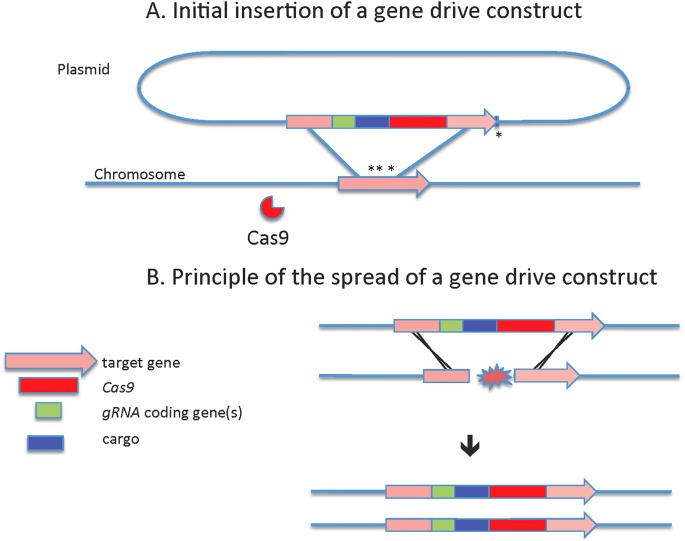Fig 2. Principle of a gene drive.
(A) Initial integration of a gene drive construct into the mosquito genome: Cas9 and the gRNAs encoded in the transgenic construct prepared as a plasmid can serve as molecular scissors mediating their own integration into the genomic target site they cut. Asterisks represent the cut sites determined by the gRNAs (three gRNAs in this example). Homologous recombination-mediated knock-in of the transgenic cassette occurs thanks to the target site flanking sequences cloned into the plasmid. (B) Spread of the gene drive in a mosquito population: mating between transgenic and nontransgenic mosquitoes places the transgenic construct in the presence of wild-type chromosomes that get cut by Cas9 at the target site determined by the gRNA(s). This break is repaired most frequently by homologous recombination with the intact chromosome, effectively copying the trans-gene into the broken wild-type chromosome and converting a heterozygous into homozygous cell. Cas9, CRISPR associated protein 9; gRNA, guide RNA.

